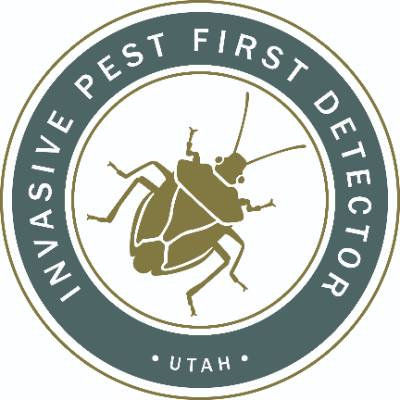Invasive Pests
Utah First Detector Program

Invasive species are a leading and growing threat to our nation’s agricultural and natural resources. Thousands of non-native (exotic) species have been introduced into the U.S., and the estimated damage and management costs of invasive species exceed $138 billion per year. In response to this threat, the Utah Plant Pest Diagnostic Lab (UPPDL) and Utah State University (USU) Extension created the Utah First Detector Program to prepare citizen responders with the knowledge and skills necessary to identify potential invasive insects, collect and submit high quality samples to the UPPDL, and notify the appropriate authorities when required.
The target audience for the Utah First Detector Program includes Master Gardeners, Extension personnel, state agricultural inspectors, certified arborists, tree and lawncare professionals, forestry and natural resource professionals, conservationists, and others with an interest in pest detection and response.
Program Goals
The primary goals of the Utah First Detector Program are to create a network of well-trained and committed citizen volunteers (“First Detectors”) to:
- Assist with ongoing invasive pest detection and outreach efforts.
- Reduce the frequency of inaccurate and excessive reporting of common species.
The UPPDL, USU Extension, and their partners will train First Detectors to detect and identify invasive insects of concern, and will guide them to existing resources for their outreach activities. As part of this program, First Detectors will receive a printed copy of the First Detector Guide and a toolkit of sample collection supplies and reference materials needed to support invasive pest awareness initiatives.
Program Partners
The UPPDL and USU Extension work closely with other state and federal agencies, such as the United States Department of Agriculture and Utah Department of Agriculture and Food, to address invasive pest threats. The Utah First Detector Program is, in part, an extension of the Utah Cooperative Agricultural Pest Survey (CAPS) Program, which is part of the larger national CAPS program. For more information about the CAPS program, visit the Utah CAPS Program page.
Become a First Detector
In order to become a First Detector, individuals must have completed the USU Extension Master Gardener program, and then must attend the First Detector training. Participants will be asked to fill out and sign a First Detector Confidentiality Form (to be handed out during the training session). In addition, First Detectors must agree to the following terms:- First Detectors never announce the arrival of a new pest. All information regarding potentially new, invasive pests must be treated as confidential. First Detectors should immediately notify the UPPDL regarding suspected symptoms or collection of life stages. The UPPDL will then communicate that information to the appropriate agencies. This protocol is required to avoid premature and incorrect reports, as significant unintended consequences may result from inaccurate communications.
- First Detectors do not have the authority to enter private property without permission. If you do receive permission to enter private property, it is recommended that the property owner accompany you.
- Being a First Detector is voluntary. First Detectors will not be financially compensated or reimbursed for time and/or travel. However, Continuing Education Units (CEUs) may be available for pesticide applicators and certified arborists. Master Gardeners may also be able to use volunteer time as a First Detector toward Master Gardener service hours.
- Complete a First Detector training. USU Extension hosts First Detector trainings, and announcements will be made in Master Gardener classes and correspondence.

